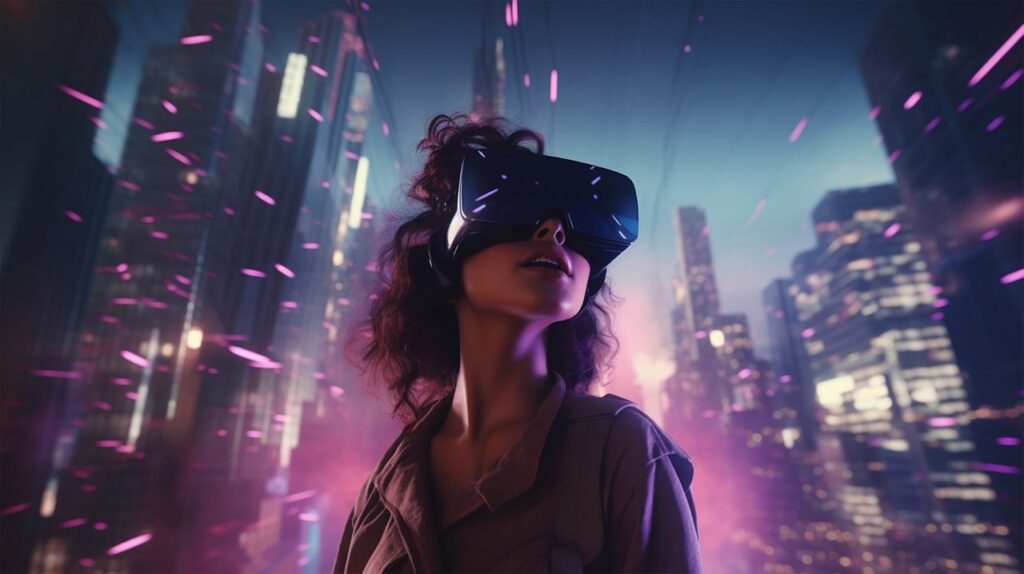You might have experienced it yourself or seen amusing videos of people wearing large VR glasses, stumbling around, and expressing amazement as they enter a virtual reality. While virtual reality has long been associated with gaming, movies, and entertainment, it is increasingly being embraced by destination and activity marketers as a powerful tool to showcase destinations and activities in unprecedented ways.
Virtual reality is relatively affordable, with production and equipment costs dropping to consumer-friendly levels. It offers a new and innovative approach, making it ideal for the experiential aspect of destination and activity marketing.
With tech giants like Google, Facebook, and Samsung promoting VR and AR technologies, they are no longer mere novelties. VR and AR products are becoming mainstream consumer items, with sales projected to reach 24 million units in 2018 and 500 million by 2025. This technology is becoming a permanent and highly sought-after channel for destinations and tour operators.
Virtual reality technology typically involves the use of a VR headset, immersing users in a digital environment through images, sounds, and other physical sensations, effectively placing them in a virtual world where they can move and interact. While VR has a long history, it has recently become prominent in mainstream consumer technology, thanks to high-powered VR headsets from Samsung and Sony, as well as affordable options from Google. VR applications include gaming, interactive videos, and 360-degree images, among others. According to Precedence Research’s Virtual Reality Market Report, the global VR market is expected to reach $187.3 billion by 2032.
Although many VR applications are entertainment-focused, marketers are finding innovative uses for the technology. VR headsets enable marketers to offer more than just images, allowing users to ‘experience’ the product. Additionally, businesses are exploring VR-based user interfaces as alternatives to traditional computer or mobile interfaces.
Virtual reality has permeated numerous industries, including the travel sector. VR provides travellers with a distinctive opportunity to preview destinations, plan their trips, and relive their experiences long after they have returned home. Here’s how VR is impacting the travel industry:
The implications for travellers at the early stages of their customer journey are clear. Despite the world being just a few hours away, travellers often have numerous questions about their prospective destinations or activities. Many of these questions can be addressed using VR.
VR allows you to engage travellers even before they visit your destination or experience your activity. It provides a direct channel for destinations and operators to showcase aspects of their offerings to potential customers from the comfort of their homes – and in impressive detail.
As content production costs decrease and VR equipment sales rise, destinations and activity operators have new opportunities to present themselves to potential travellers. However, as with any marketing effort, the content created must be compelling and authentic. It should creatively highlight the unique experiences offered without attempting to create a virtual replacement.
Marriott Teleporter
Marriott Hotels unveiled the “Marriott Teleporter,” an immersive virtual reality experience that enables users to virtually visit various Marriott properties across the globe. This innovative tool allows travellers to explore different destinations and Marriott hotels from the comfort of their own homes, providing a unique way to experience and preview accommodations before making travel decisions. By immersing potential guests in the ambience and amenities of their hotels, Marriott enhances the pre-travel planning process, making it easier for travellers to choose their ideal destinations.
Airbnb 360 Experiences
Airbnb offers 360-degree virtual tours of its rental listings, allowing travellers to virtually explore the spaces they are considering renting. These immersive tours enable potential guests to take virtual walks through the properties, examining details and getting a feel for the layout and atmosphere. This technology helps travellers make more informed decisions by giving them a comprehensive view of the accommodations before booking. By providing a detailed and interactive preview, Airbnb enhances the trust and confidence of its users, ensuring a more satisfying booking experience.
As technology progresses, the role of virtual reality (VR) in the travel industry is anticipated to expand significantly, presenting several future possibilities:
- Enhanced VR experiences incorporate haptic feedback, allowing users to sense and interact with the virtual environment on a more realistic level.
- Integration of VR-based language translation tools to aid travellers in navigating foreign countries and communicating with locals.
- Introduction of collaborative VR platforms for travel planning, enabling groups of travellers to explore and plan trips together in a virtual space.
- Incorporation of Augmented Reality (AR) features for real-time information overlay during travel experiences, providing users with helpful and relevant details about their surroundings.
Bottomline
Virtual Reality (VR) is fundamentally transforming the way we explore the world, plan our trips, and engage with travel destinations. Its impact goes beyond mere entertainment; it revolutionizes the entire travel experience. As VR technology continues to evolve and become more accessible, we can expect a wave of immersive and interactive travel experiences that were previously unimaginable.
One of the most significant advancements in VR is its ability to provide hyper-realistic simulations of destinations and activities. Travellers can virtually step into iconic landmarks, wander through bustling streets, and even partake in thrilling adventures, all from the comfort of their homes. This level of immersion allows for more informed travel decisions, as users can explore potential destinations in-depth before making bookings.
Furthermore, VR is not just about visual experiences. With the integration of haptic feedback technology, users can now feel sensations like textures, temperatures, and even vibrations, adding a whole new layer of realism to virtual travel. Imagine feeling the warmth of sunlight on your skin as you virtually stroll along a beach or experiencing the rush of wind as you soar through virtual landscapes. Additionally, VR-based language translation tools are poised to revolutionize communication for travellers in foreign countries. Real-time language translation within VR environments can bridge language barriers, making interactions with locals and navigation through unfamiliar territories much smoother and more enjoyable.




